13 February 2023
![]() 15 mins Read
15 mins Read
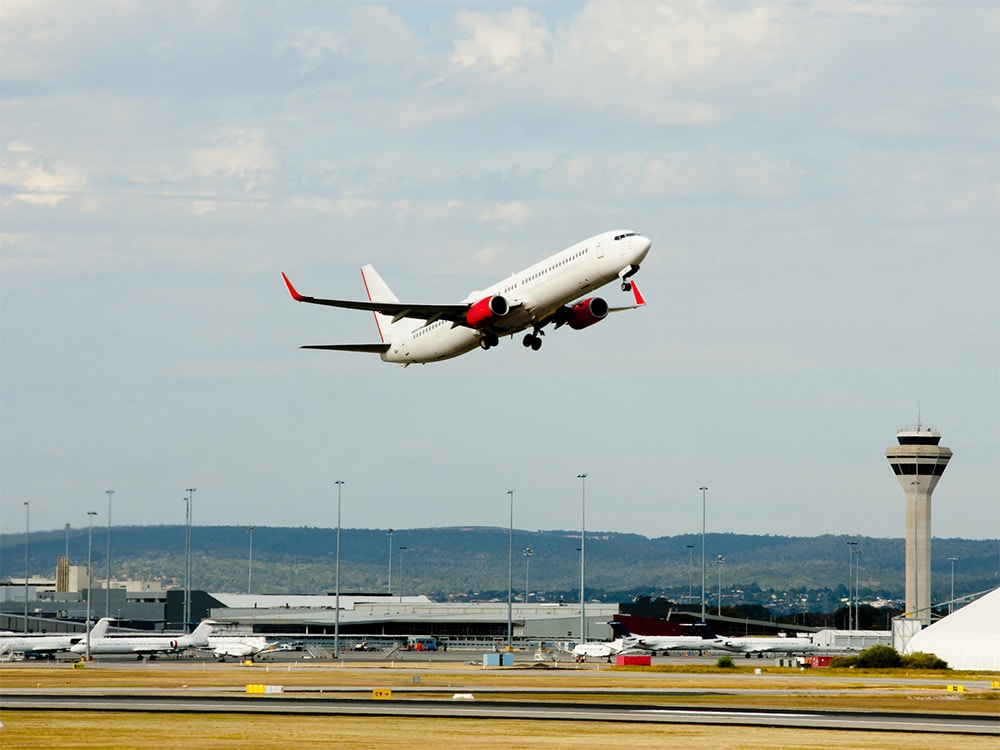
With long lockdowns behind us, and state borders coming down one by one, Christmas holidays are looking much more joyous, if a little conditional. While some states and territories are open to all merrymakers, others are a little stricter on who they want to eat their Christmas ham with. Before we pack our bags and head interstate, here’s a rundown of who can travel where, what you need to do when you reach the border and what happens if you’re not vaccinated or get COVID while travelling – and head here to read up on everything we know about the new Omicron variant and on the likelihood it will impact your trip,
The first to fling their borders open to everyone: all travellers can travel to NSW, unless you have been to a ‘place of high concern’ in the past 14 days.
Currently, due to high case numbers, if you are travelling from Victoria and are over 16, you must be fully vaccinated to enter NSW (or have a medical exemption). There are no entry requirements for other travellers unless you have been to an area of concern.
Anyone who has been to a ‘close contact place’ is not permitted to enter NSW within 14 days, or within seven days if you are fully vaccinated. Anyone who has been to a ‘casual contact place’ is allowed to enter if they have received a negative COVID-19 test result prior to arrival. Check the NSW COVID-19 concerns notice to find out if you’re considered a casual contact or a close contact.
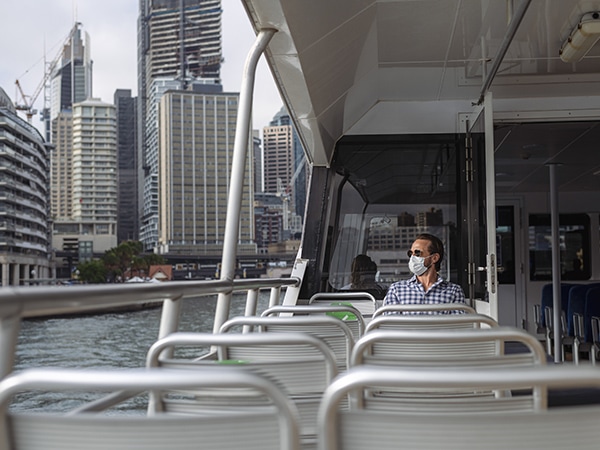
Masks are required on all NSW public transport.
All interstate travellers must follow these guidelines and must wear a mask at all NSW airports, on flights and in some high-risk indoor settings.
If you’re well enough, you will be required to self-isolate for 14 days at your accommodation. If your accommodation is not appropriate or unavailable for your entire self-isolation period, you can contact the NSW Health Isolation Support Line on 1800 943 553 for assistance. You may be required to self-isolate in a quarantine hotel, hospital, or another medical facility if you cannot safely isolate at your accommodation. Any travellers who are required to stay at a quarantine hotel will be required to pay the fees.
Anyone can travel to Victoria.
All travellers are required to apply for a travel permit at Service Victoria to enter the state. The type of permit and travel restrictions will depend on where you have been in the past 14 days and whether you are fully vaccinated (or have a medical exemption).
Victoria classifies regions as green, orange or red zones based on COVID risk; check this map for updates on zones. Restrictions apply to those who are travelling from or have visited an orange or red zone in the past 14 days. Greater Sydney and the ACT are currently classified as orange zones.
If you are travelling from an orange zone and are fully vaccinated, you are required to monitor for symptoms and test if any develop. If you are not fully vaccinated, you will need to apply for a permit and get tested within 72 hours of arriving in Victoria and isolate until you receive a negative result.
If you are travelling from a red zone, you will be required to test no more than 72 hours prior to arrival and again within 72 hours of arrival, and isolate until you receive a second negative result.
You will not be eligible for a permit if you are a close contact or have been to one of these exposure sites. You must wear a mask at all Victorian airports and on flights.
You will be required to self-isolate for 14 days at your place of accommodation, if you are well enough to do so. If you cannot self-isolate at your accommodation, you can contact the Coronavirus Hotline on 1800 675 398 to enquire about assistance. Currently, hotel quarantine fees do not apply to domestic travellers.
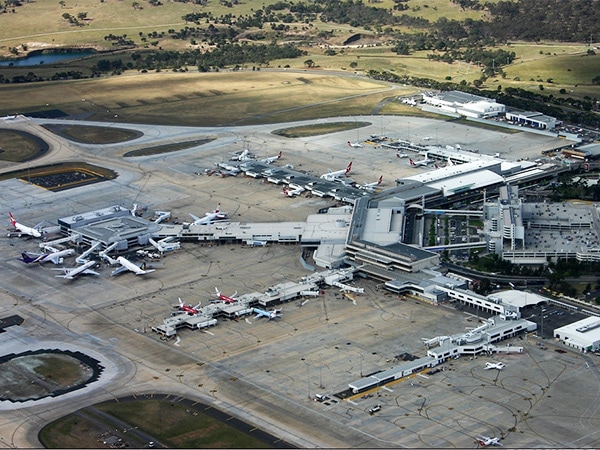
All Victorian travellers are required to apply for a travel permit.
From 13 December (brought forward from the 17th), fully vaccinated travellers from any state or territory can enter Queensland, even if they are travelling from a hotspot.
All travellers will be required to complete a Queensland entry pass.
At present, if you’ve been to a declared hotspot in the 14 days prior to your arrival, you will also be required to test negative to COVID-19 at least 72 hours before you travel to Queensland, arrive by air, and get a COVID-19 test five days after you arrive in Queensland. Penalties will apply for people who do not.
Once Queensland hits 90 per cent vaccination (date to be determined), there will be no requirements for fully vaccinated travellers, even if travelling from a hotspot. If you are not vaccinated, you will need to undergo a period of quarantine.
You will be required to quarantine for 14 days either at your place of accommodation or in government arranged accommodation, if you’re well enough. Your accommodation and daily meals during the latter will be managed by the Queensland Government; following your quarantine period you will receive an invoice for a contribution to the cost.
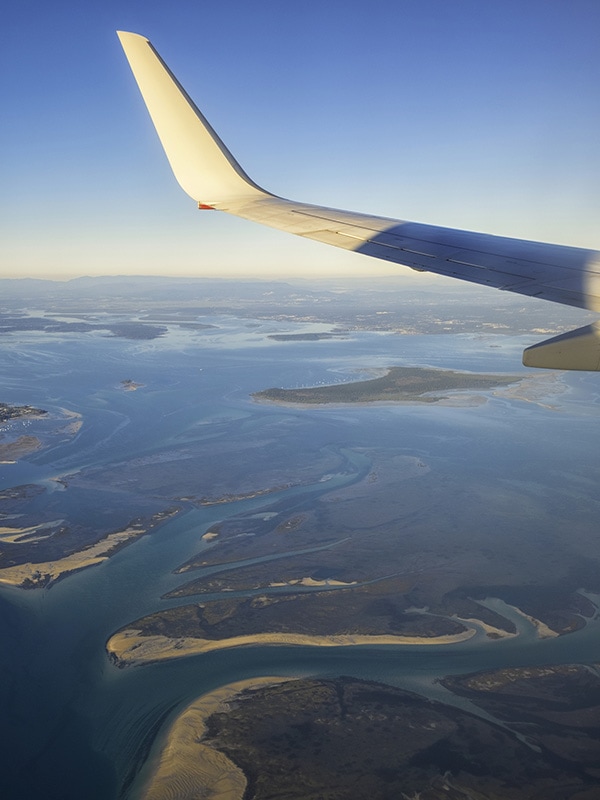
Travellers will be able to enjoy Queensland’s spoils from December 13.
Only vaccinated travellers visiting from Queensland, Western Australia, South Australia and Tasmania are permitted to enter the Northern Territory. Currently, all of NSW, ACT and Victoria are declared hotspots, and residents of these states cannot travel to the NT.
All travellers are required to complete a Border Entry Form no more than seven days before arrival.
Once the territory reaches 80 per cent vaccination rate (date TBA, expected to be in late November), three travel categories will come into place, indicating zones based on COVID risk. Vaccinated travellers from a red zone (high risk) can enter but will be required to quarantine for seven days if they are staying in a ‘high vaccination zone’; vaccinated travellers from an orange zone (medium to low risk) will have to quarantine until they receive a negative test result; and vaccinated travellers visiting from a green zone can enter the NT freely.
From December 20, all travellers entering the NT will be required to take a rapid antigen test on arrival. So long as the test comes back negative, travellers will no longer be required to quarantine, regardless of the zone they are visiting from.
Unvaccinated travellers are not permitted to enter the state unless they have an approved reason to travel, and they must quarantine at Howard Springs or Alice Springs for 14 days.
You must wear a face mask at all NT airports and on flights.
If you’re well enough, you will be required to self-isolate for 14 days, either in an approved hotel or at a supervised quarantine facility at Howards Springs or Alice Springs. The cost of quarantine is at your expense.
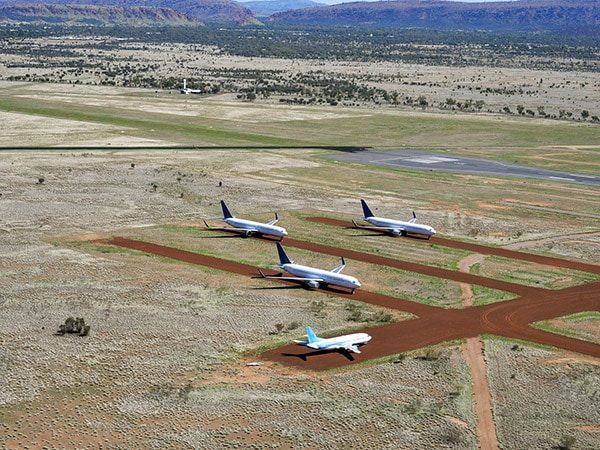
Aircrafts on field of Alice Springs airport.
From 12.01am on 23 November 2021 (when the state hits its 80 per cent vaccination target), fully vaccinated people from all states and territories can enter South Australia.
All travellers must complete an EntryCheck SA application.
Travellers from areas with community transmission will need to have a COVID-19 test within 72 hours prior to arrival in SA and undergo a daily symptom check for 14 days via the HealthCheck SA app. And travellers from areas with a vaccination rate between 80 and 90 per cent must also take a test within 24 hours of arrival.
Those who travel from an LGA with community transmission and a vaccination rate of less than 80 per cent must show evidence of a negative COVID-19 test result, taken within 72 hours prior to arrival, and quarantine for seven days. They will have to undergo tests within 24 hours of arrival in SA, and again on days six and 13, and they will not be allowed into high-risk settings or certain events for 14 days.
Unvaccinated travellers who are given the authorisation to enter will be required to complete 14 days of quarantine. When the state reaches a 90 per cent vaccination rate, unvaccinated travellers will not need authorisation and can enter SA, however, they will still be required to complete 14 days of quarantine.
You must wear a face mask at all indoor venues, including airports and on flights, in South Australia.
You must self-isolate at your accommodation for 14 days, at your own cost, if you are well enough. If you are unable to do so, you can contact the COVID-19 Information Line on 1800 253 787 who may be able to assist with emergency accommodation.

Fully vaccinated people from all states and territories can enter South Australia.
From 15 December, when the state reaches 90 per cent vaccination, fully vaccinated travellers from any state or territory, who are 12 years and over, are allowed to enter Tasmania without quarantining However, travellers who’ve been in high-risk areas in the 14 days before their arrival in Tasmania must return a negative COVID-19 test result within the 72 hours before they depart for Tasmania.
At present, entry to Tasmania and quarantine requirements depend on where you’ve been in the 14 days before you travelled to the state.
Currently, travellers are grouped within one of three different categories, classed as low-, medium- or high-risk, and based on the number of COVID-19 cases or level of community transmission in those areas.
Those travelling from a low-risk area do not need to quarantine on arrival, but they must register their details via the Tas e-Travel system no more than one day before arriving. Travellers arriving from medium-risk areas must quarantine in either suitable premises or government-arranged accommodation and apply for an electronic G2G or ‘Good to go’ Pass. They need a QR code to enter the state under the new system. Travellers who’ve visited (or reside in) a high-risk area in the 14 days before arriving in Tasmania can’t enter the state.
Unvaccinated travellers will be required to test and also quarantine at a government-designated quarantine facility at the cost of the traveller.
Masks are required at airports, on planes and at high-risk indoor settings.
If you are well enough, you will be required to self-isolate for 14 days at your accommodation at your own expense, provided it is a suitable premise. Otherwise, you may be required to isolate at a government-designated facility.
Anyone can travel into the ACT, provided they are fully vaccinated and have not been to a high-risk geographical area in the previous 14 days.
There are no requirements for fully vaccinated travellers, unless you have been to a high-risk geographical area in the past 14 days where exemption documentation is required.
Unvaccinated travellers are only permitted to enter the ACT for an essential purpose, will be required to complete an exemption form, return a negative COVID-19 test within 48 hours of entering, and complete 14 days of quarantine with additional testing.
Face masks are required indoors, including at airports and on flights.
If you are well enough, you must self-isolate for 14 days at your accommodation, at your own expense. If you’re unable to do this, you should discuss this with ACT Health when they contact you regarding your positive result.
Only travellers from ‘very low-risk jurisdictions’ can travel to Western Australia, which currently includes South Australia, Tasmania and Queensland.
WA will reopen its border to fully vaccinated travellers when the vaccination rate reaches 90 per cent, which is projected to happen in late January or early February. A specific date will be set after the 80 per cent vaccine mark is reached, which is expected to happen in December.
Travellers must complete a G2G PASS declaration before travelling to WA, and undergo a health screening at Perth Airport.
From 15 November, anyone travelling from a low-risk jurisdiction must be fully vaccinated, must self-quarantine for 14 days in suitable premises or at a government-approved quarantine facility, at their own expense, and have a COVID-19 test within 48 hours of arrival and on day 12.
Travellers from medium-risk and high-risk jurisdictions will need to seek approval to enter WA and must be fully vaccinated, have pre-arrival COVID tests and further testing when in WA, and self-quarantine for 14 days in a suitable premise within 200 kilometres of Perth Airport. Anyone travelling from an extreme-risk state (currently Victoria) is very unlikely to be granted entry and is subject to the same tight restrictions and rules as medium- and high-risk travellers.
Masks must be worn at airports and on flights; masks are also required if you are travelling to a quarantine facility or premise.
When the state does reopen its borders to fully vaccinated travellers in 2022, all arrivals will still need to return a negative PCR test 72 hours prior to departure and undertake a COVID test within 48 hours of entry.
If you are well enough, you will be required to self-isolate for 14 days at your accommodation at your own expense. If you are directed to a state quarantine facility, you will be required to pay the fees.
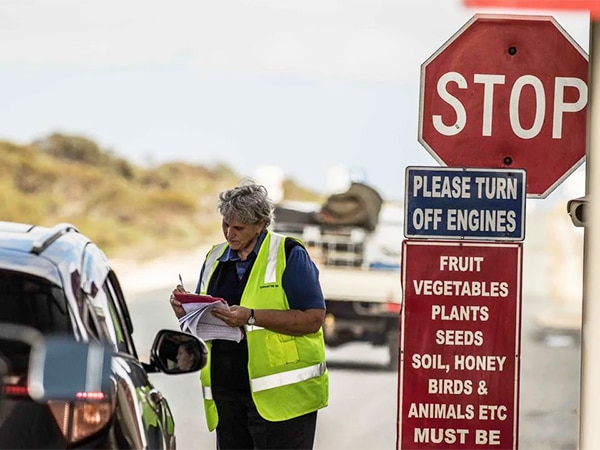
Only travellers from very low risk jurisdictions can travel to Western Australia.
Each state and territory will have its own rules regarding close and casual contacts and it’s important you check these prior to travelling as they’re being updated regularly.
For example, in NSW close contacts are required to test and self-isolate, but the self-isolation period will depend on if you are fully vaccinated (seven days) or not vaccinated (14 days). The rules around casual contacts are determined on the risk settings. While in Queensland, you will have to isolate for 14 days if you’re a close contact, regardless of your vaccination status. And casual contacts are required to test and isolate until they receive a negative result.
Hotel quarantine is the biggest outlay of cost when it comes to travelling interstate during the COVID-19 pandemic. Whether you need to quarantine as a requirement of entering a state or territory or you test positive to COVID while travelling or become a close contact, you may be required to complete up to 14 days of hotel quarantine. Depending on the state, the cost of hotel quarantine is usually fully or partially self-funded.
As a general rule, self-isolation periods are 14 days, however be aware that if someone you are isolating with tests positive while in isolation, the 14-day period will start again and the additional days will be added to the cost.
As a condition of entry to some states, you may be required to have a COVID-19 test and provide proof of a negative result. Some testing clinics offer asymptomatic testing, while others do not allow it, so you may need to go to a private pathology and pay for your test. Call ahead to your local testing clinic to enquire about this. A COVID-19 test can cost anywhere between $50 to $150.
You will also need to check what will be accepted as proof of a negative result when arriving for your holiday (i.e. a text message from the state or territory’s health department may not be sufficient enough and you may require an official certificate and therefore may need to book with a private pathology).
It’s all well and good being able to travel interstate for a holiday, but be sure to check you’ll be able to return home without restriction too! For example, people from Western Australia are currently allowed to travel to Victoria, however they cannot return without approval. Other states, such as Tasmania, allow fully vaccinated residents to travel to higher risk areas and complete 14 days of home quarantine on their return. Factor this into your holiday plans, as it could mean additional time off work and higher costs if you need to pay for hotel quarantine.
It’s always a good idea to have travel insurance, even if only travelling interstate, and it’s even better now during such uncertain times. With states reopening their borders, Christmas is looking much brighter for 2021 but – as we’ve learnt over the past two years –COVID-19 is unpredictable.
Some travel insurance companies offer limited cover for COVID-related incidences, such as tour or hotel cancellations or in the event you get COVID-19 and become ill. However, most won’t cover for border closures, so read your policy thoroughly.
This information is correct at the time of publishing. Please use this article as a guide to booking your interstate travel this Christmas, but be sure to check directly with the relevant state or territory government websites closer to your travel dates, as these rules can change at short notice.
Great reading and site thanks